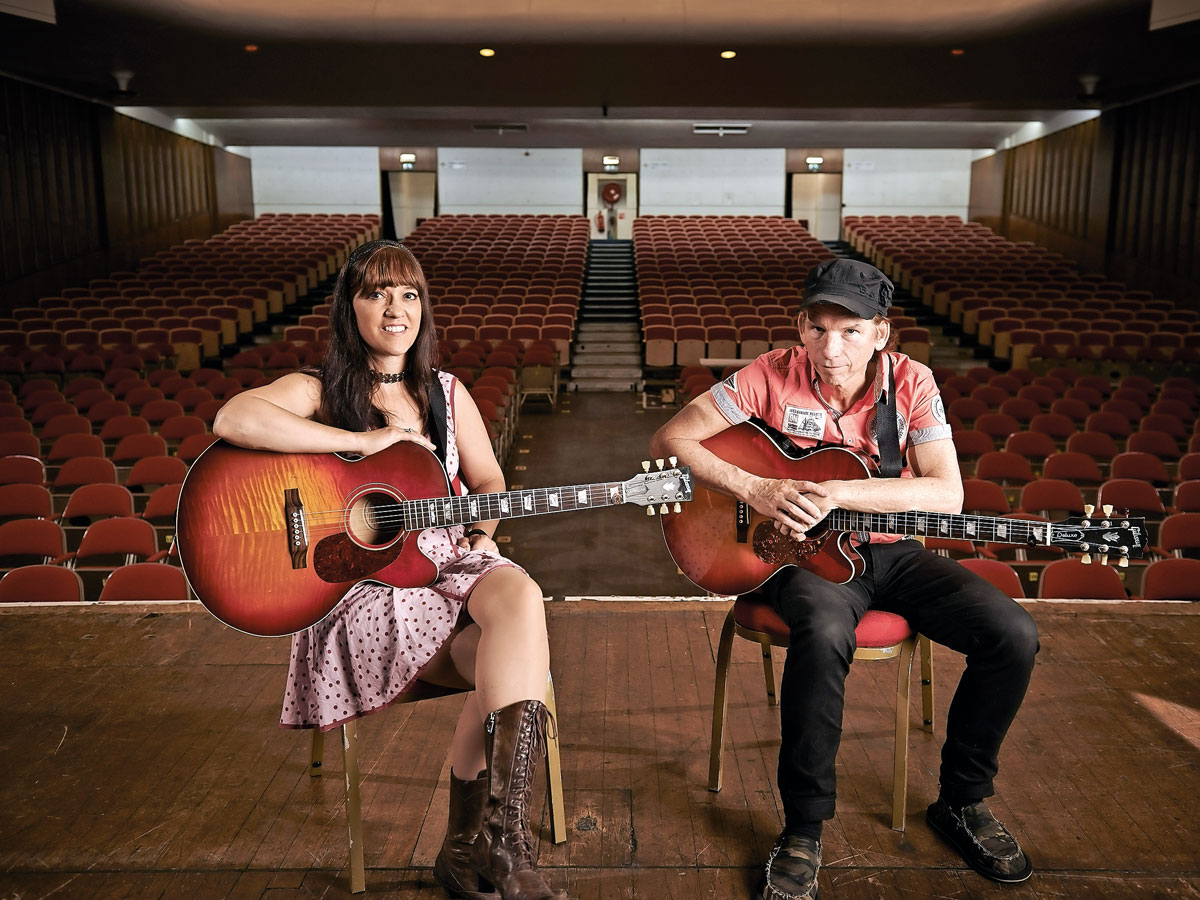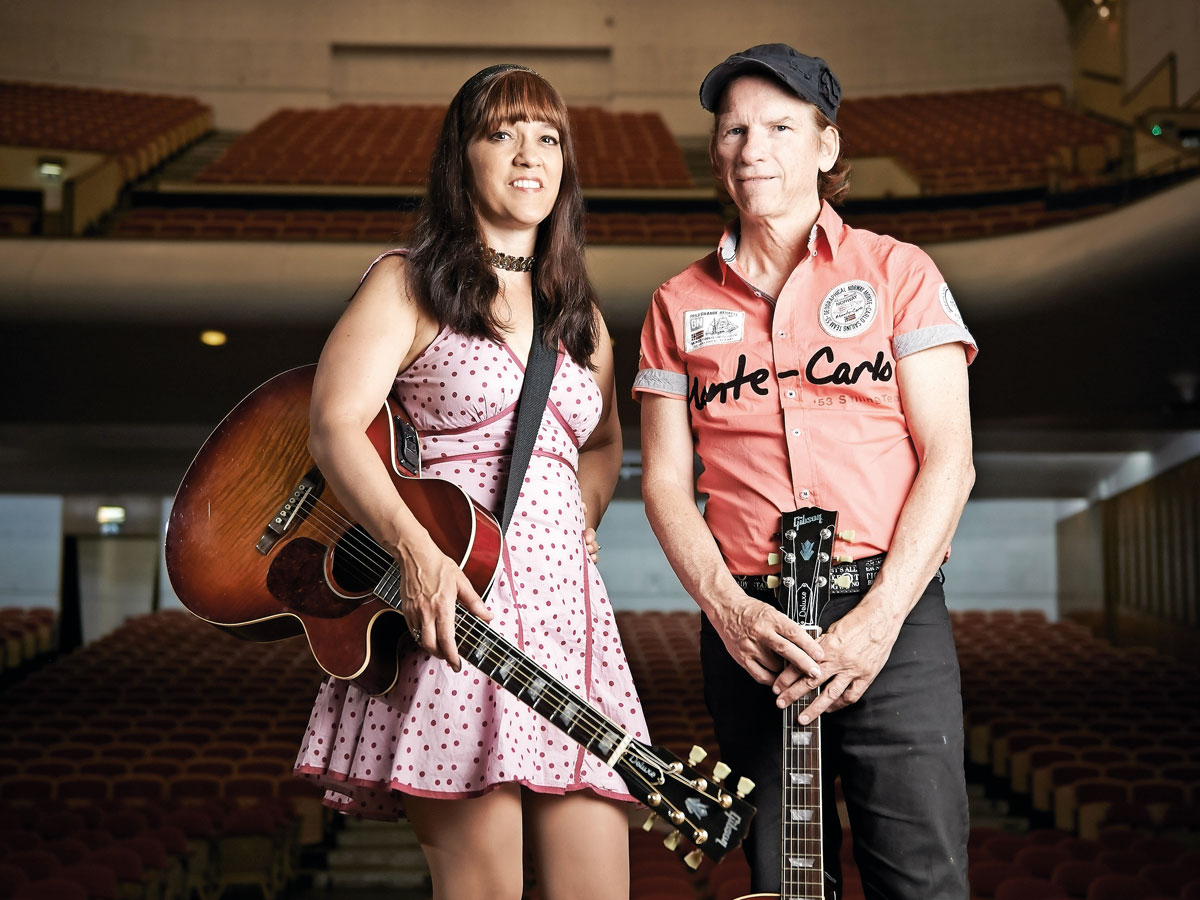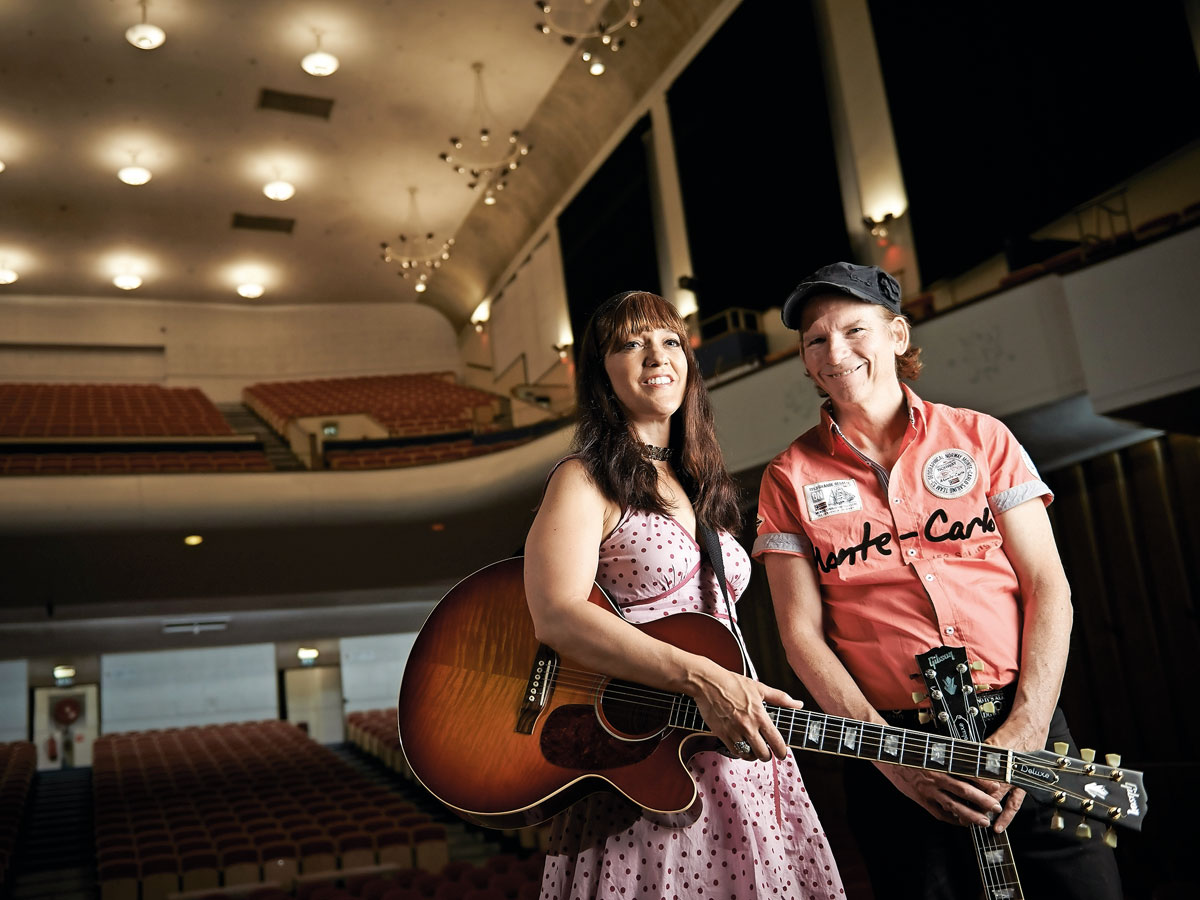Pete Kennedy talks Teles, Chet and rare Gibsons
The country/bluegrass pro tells all

A meeting of minds
As one half of folk-pop duo The Kennedys and sideman to country star Nanci Griffith, Pete Kennedy is a stellar guitarist whose playing is a blend of many facets of Americana, from bluegrass and Western swing through to country twang and Byrdsian jangle.
Read on to find out what it was like to get guitar lessons from heavyweights such as Chet Atkins, and why Telecaster players have to be really good...
American husband-and-wife duo Pete and Maura Kennedy have been making ethereal folk-pop music together since the mid-1990s, although both have devoted their adult lives to performing and recording music across a stylistically diverse array of genres.
Upstate New Yorker Maura, and Pete - who hails from the Washington DC suburbs - first met in Austin, Texas in 1992 while Pete was playing guitar in country singer-songwriter Nanci Griffith’s band. Pete takes up the narrative:
"[My wife and I] loved Buddy Holly, Roy Orbison and The Everly Brothers, and we were both nerds who would read the liner notes very, very carefully"
“Maura and I met at a place called the Continental Club, on the south side of Austin, Texas. It’s like a roots music, rockabilly kind of joint. I was playing, and we sat down and started talking about music and we both loved a lot of the same music, what’s called Americana now, although the term wasn’t applied then.
"But we loved Buddy Holly, Roy Orbison and The Everly Brothers, and we were both nerds who would read the liner notes very, very carefully. So I would know that Hank Garland played the intro to this or that song and stuff like that, and we both were very excited about that kind of stuff.
“So the very next day there was what they call a ‘guitar pull’. They have a thing called a tractor pull in Texas, where tractors pull heavy loads. So when songwriters get together and play songs, they call it a guitar pull.
"So we went to a guitar pull and we started singing together and playing, and we realised that the chemistry was all, you know, in place, and so we wrote a song right away.
“We were in Austin, Texas, and I went up to Telluride, Colorado, and it’s 1,000 miles away. It’s way up high in the Rockies, 10,000 feet, and I played a show with Nanci Griffith there.
"Nanci and Emmylou Harris were singing and it was great, but when the show was over, I wanted to get back together with Maura and I called her on the phone, and we decided that we would find an equidistant point between Austin and Telluride. We were each going to drive there solo and we would meet there.
“It turns out that Lubbock, Texas was exactly 500 miles from each of us, and that was the home of Waylon Jennings, Butch Hancock, Joe Ely, and most notable of all, Buddy Holly; and we’d just been talking about Buddy Holly, so we said, ‘Okay, this is what we’re going to do. We’re each going to drive 500 miles and we’ll meet at Buddy Holly’s grave in Lubbock, Texas’ and that’s what we did.
"Amazingly, we both actually did it. You’d think you would drive there and sit there for a couple of hours waiting and realise the other person was not that crazy!”
It was the beginning of a beautiful partnership that saw the couple begin to write music together, while Maura quickly landed the gig as a harmony singer in Griffith’s Blue Moon Orchestra backing band.

School Days
Griffith’s band was a natural home for two musicians with a lifelong love for roots music, while Pete in particular benefitted from being schooled by the greats in his formative years as a guitarist.
“I was from Virginia originally, and bluegrass was very, very popular. So I saw Bill Monroe and Doc Watson and all these players,” Pete reveals.
“What I used to do was collar these great people when they would come through town, and so I’d get a lesson from Doc Watson and then I’d get a lesson from jazz guys like Joe Pass. I took some lessons from him, and Johnny Smith, another great guy.
“Tell your own story on guitar rather than try to deliberately imitate. You know, learn from people, but if it comes out your own way, that's fine”
“I was very lucky because I was right near Washington DC and we had this Telecaster cult there that was Roy Buchanan and Danny Gatton, and they were local players in bars. You could hear them five times a week if you wanted to, in a tiny little bar.
"So I would follow Danny around for a long time, and I would go over to his house and sit around his garage all day and work on guitars with him, and he’d show me licks and stuff on the guitar. He was kind of like a big brother to me, really.
"When I got good enough, I started playing in his band, and that was a real challenge because he would play every possible lick and solo that could be played on a guitar, and then he’d look at me and go, ‘Okay, you’re next’.”
The chief lesson that Pete learnt from that amazing experience was, “to tell your own story on the guitar, rather than try to deliberately imitate. You know, learn from people, but if it comes out your own way, that’s fine. You don’t have to try to get it perfect like them, because if you get up with Danny Gatton or Tony Rice, you can’t just play an imitation of their licks, because the real guy is there.
"So from being around people like that, I learned how easy it is, in a way, to play in an honest way because you don’t have to try to exactly replicate anybody else.”
Another legend that Pete rubbed shoulders with was Chet Atkins: “I was down in Nashville and I had just bought a Gibson guitar, and Gibson contacted me and they said, ‘We want to get a picture of Chet playing this guitar. Would you mind going over to his office and jamming with him for a while with the photographer?’
"I thought about it for a while, and I said, ‘I don’t think I’d mind that. I think I can include him in my schedule for that’ [laughs]. So I went over, and we sat down on the couch and Chet said, ‘Well, what do you want to play?’ and I said, ‘Something slow’.
“He said, ‘Thank you’ because he was tired of 50 years of people showing him how great they are at his style. So I think we just approached it as musicians, and we played Honeysuckle Rose. We went right at that tempo instead of going, you know [super fast]. He wouldn’t care, he’d heard everybody do that.
"So we really had a good time, and from being around people like that I learned not just about guitar but sort of how they held themselves, and how they approached people - it must be weird to be Chet Atkins and no-one else is as good as you, and yet he was not egotistical at all.
“He realised that whenever a guitarist was around him, they were hoping to learn something, and he was very, very open about facilitating that, and I found that with everybody.
"Doc Watson and Joe Pass and all these guys, they were very, very open about teaching, but it was nothing like going to the local music store to take guitar lessons. You’d just kind of be around them and they would play little bits, and if you had a question they would answer it.”

No Place To Hide
Although Pete is a consummate electric guitarist, the tour that brings The Kennedys over to the UK and in conversation with Guitarist at Bristol’s Colston Hall finds both Pete and Maura playing early-1990s Gibson EAS Deluxe acoustics.
“I loved the fact that it’s basically like an acoustic Les Paul. I think they were pretty much prototypes, because we have three, and one has the very, very narrow mid-60s kind of neck. One’s got a gigantic 50s neck and the one in the States is right in-between that. So I guess they were trying different things. I guess they thought, ‘Well, so many people like Les Pauls, maybe they’d go for an acoustic version?’
“But we were driving through Montana and we went into the [Gibson] factory in Bozeman and everybody gathered round and said, ‘Oh yes, those things’. They made about 50 or something, less than 100, and then just gave up on that. So we’re trying to buy them all up! [laughs]
"If you’ve got a little Fender combo and a Telecaster straight into it, that’s the test right there. There’s no hiding place”
"Our style is a bit of a hybrid; it’s not straight bluegrass. If I had a big D-28 it would be great for that, but I wouldn’t be able to switch around and do the other stuff too.”
Guitarist wonders if an all-acoustic performance forces Pete to modify his technique, but he says not: “I very deliberately developed a style that would work the same way on either one. In fact, string-wise, I use 0.011s on all guitars because they’re a little bit heavy for electric but they’re workable, and they’re a little bit light for acoustic but they’re also workable, and you can change your touch a little bit. But that way, when I switch back and forth, there isn’t a big period of adaptation.
"If I go into a guitar shop and I hear people trying out a guitar, they plug into the distortion jammer right away and everything sounds amazing because, you know, you turn on the overdrive and go, ‘I’m God’. But if you plug into the clean channel, then all of a sudden you have to really play something for you to sound good.
“So I deliberately tried to not let myself totally indulge in playing with a distorted sound all the time, because when you play clean, especially if you’re playing a Telecaster, which is very unforgiving, it’s such a clean guitar, every note is right there. You can’t just go and sustain for days on end. You’ve got to actually be really playing it.
"When you go to a guitar show, you really want to be watching the player’s right hand. When I played with Gatton, the whole audience would be all guys, all guitarists and they’re all looking at his left hand.
"They really should have been looking at playing like Scruggs rolls and hybrid picking and stuff, and that would have given them much more of a clue of how to get that sound.
“I find that anybody who specialises in Telecaster, they sort of have to be good because it’s not like playing with humbuckers and a massive pedalboard and a Marshall stack.
"If you’ve got a little Fender combo and a Telecaster straight into it, that’s the test right there. There’s no hiding place. The gear is not going to do anything for you. You’ve got to play all the music.”
Pete Kennedy’s instrumental electric album Tone, Twang, And Taste is out now. You can order this, and studio albums by The Kennedys, via www.kennedysmusic.com
Chris Vinnicombe worked with us here on the MusicRadar team from the site's initial launch way back in 2007, and also contributed to Guitarist magazine as Features Editor until 2014, as well as Total Guitar magazine, amongst others. These days he can be found at Gibson Guitars, where he is editor-in-chief.

